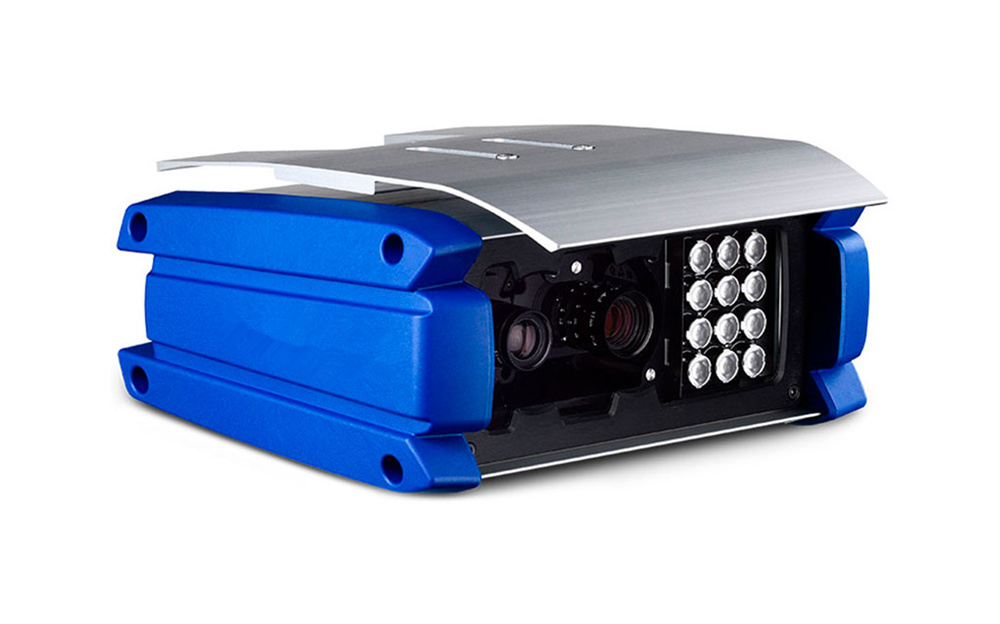Security Camera with Speed Radar: Revolutionizing Traffic Monitoring and Surveillance

In today’s fast-paced world, the integration of advanced technologies like radar and computer vision into security systems has transformed traffic management and public safety. A security camera with speed radar combines high-resolution visual monitoring with precise speed detection, offering unparalleled accuracy in law enforcement, traffic analysis, and accident prevention. This guide explores the technology behind these systems, their applications, and how to choose the best solution for your needs.
1. Technology Overview: How Speed Radar and Cameras Work Together
1.1 Radar Technology in Speed Detection
Radar systems, such as Doppler radar, detect moving objects by analyzing frequency shifts in reflected signals. For instance, Garmin’s MotionScope™ radar uses this principle to highlight moving targets in red (approaching) or green (receding), enabling real-time tracking of vehicles and pedestrians. When integrated with cameras, radar provides speed data while visual systems capture license plates, driver behavior, and contextual details.
1.2 Camera Capabilities
Modern security cameras, like the Blurams A33 PTZ Dome Camera, offer 2K resolution, 360° coverage, and dual-band Wi-Fi for stable data transmission. Industrial-grade cameras, such as The Imaging Source’s “33” series, feature high dynamic range (HDR) and Sony CMOS sensors to capture clear images in low light or adverse weather, critical for pairing with radar.
1.3 Edge Computing for Real-Time Processing
Edge computing reduces latency by processing data locally. For example, traffic systems use cloudlets near cameras to analyze congestion and speed while relaying critical data to central servers. This hybrid approach ensures reliability even in unstable network conditions.
2. Key Benefits of Integrated Systems
-
Precision Enforcement: Radar-camera fusion minimizes false alarms by cross-verifying speed and visual data. Research from Chongqing Jiaotong University shows that combined systems improve pedestrian tracking accuracy by 16.72% in cluttered environments.
-
24/7 Operation: Cameras with IR night vision (e.g., Blurams A33) and radar’s weather-resistant design ensure functionality in rain, fog, or darkness.
-
Cost Efficiency: Centralized systems reduce infrastructure costs. Eufy’s SoloCam S340, for example, uses solar panels for sustainable operation.
3. Top Applications of Radar-Enabled Security Cameras
3.1 Traffic Law Enforcement
-
Speed Monitoring: Systems like those described in IEEE Transactions on Intelligent Transportation Systems use radar to detect speeding vehicles while cameras capture license plates for automated ticketing.
-
Red Light Violations: Integrated systems trigger cameras when radar detects a vehicle crossing an intersection illegally.
3.2 Urban Traffic Management
-
Congestion Detection: Edge computing models analyze radar and camera data to optimize traffic light timing and reroute vehicles.
-
Pedestrian Safety: Radar detects low-observable pedestrians in complex scenarios, while cameras provide visual confirmation for alerts.
3.3 Commercial and Residential Security
-
Perimeter Monitoring: Radar detects intrusions, and PTZ cameras (e.g., Blurams A33) auto-track suspects.
-
Parking Management: Systems like Advance Security’s 580-line camera validate parking permits via license plate recognition.
4. Choosing the Right Security Camera with Speed Radar
4.1 Technical Specifications to Consider
-
Radar Type: Doppler radar (e.g., Garmin MotionScope) for motion direction and speed accuracy.
-
Camera Resolution: Minimum 1080p, with 3MP or higher recommended for license plate clarity.
-
Environmental Resistance: IP67 rating (as in Advance Security cameras) for waterproofing and dust resistance.
-
Power Options: Solar-powered models (eufy S340) for remote installations.
4.2 Software and Integration
-
AI Analytics: Look for systems with machine learning for behavior recognition, like the LSTM-DeepSort algorithm used in highway monitoring.
-
Cloud and Local Storage: Dual options ensure data redundancy (e.g., Blurams’ free cloud storage).
4.3 Compliance and Certification
-
Ensure FCC/IC compliance for wireless devices.
-
Check GDPR or local privacy laws for data handling.
5. Future Trends in Radar-Camera Integration
-
AI-Powered Predictive Analytics: Systems will anticipate traffic incidents using historical data and real-time inputs.
-
5G and Edge Computing: Faster data transmission enables real-time processing for autonomous vehicles.
-
Multi-Sensor Fusion: Combining LiDAR, radar, and cameras (as in Chang’an University’s research) for 360° situational awareness.
6. Case Studies: Real-World Success Stories
-
Highway Speed Enforcement in China: A system using radar and industrial cameras reduced accidents by 22% through real-time speed monitoring.
-
Smart City Project in Texas: Integrated radar-camera systems cut traffic violations by 35% while improving pedestrian safety.
7. Conclusion
A security camera with speed radar is no longer a luxury but a necessity for modern traffic management and public safety. By combining radar’s precision with cameras’ visual clarity, these systems offer actionable insights for governments, businesses, and homeowners. When selecting a solution, prioritize scalability, environmental adaptability, and compliance to maximize ROI.
